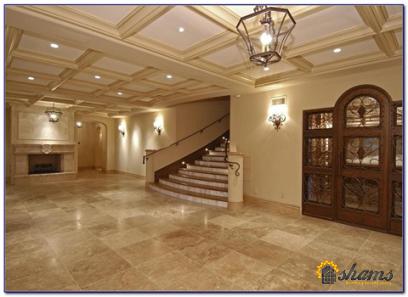The stone used in the interior or exterior of the walls in the building has a standard size and thickness that in this part you will be familiar with them. Because the building itself is the most essential component of the structure and the public’s primary motivation for wanting it, it is best to employ precision and elegance in the design of the structure. Stone is one of the materials that may be utilized in a wide variety of construction applications. You have your choice of many different sorts of natural stones to utilize if you share my preference for shiny ceramics and stones. Because of the wide variety of stones and the diverse thicknesses required for the various applications, it is widely employed in building construction, and many people utilize such receivers. The study of geology classifies rocks into three categories: sedimentary rocks, igneous rocks, and metamorphic rocks. Each of these three categories, in turn, is subdivided into even more specific categories based on the lithological and mineralogical features of the rocks that comprise them. Granite (a type of igneous rock), limestone, travertine, sandstone (all types of sedimentary rock), slate, marble, and quartzite are the primary stones used in the construction of the facade (metamorphic rock). These many kinds of stones will each receive a quick introduction in the next paragraphs.  Stones used for construction are often chopped into various pieces, such as slabs, tiles, and so forth. The thickness of cut stones is an essential characteristic of these kinds of stones. There are a few distinct angles from which one might evaluate the thickness of a building stone. Depending on the kind of cut you get. In factories, various shapes can be cut into building stones using various cutting tools.
Stones used for construction are often chopped into various pieces, such as slabs, tiles, and so forth. The thickness of cut stones is an essential characteristic of these kinds of stones. There are a few distinct angles from which one might evaluate the thickness of a building stone. Depending on the kind of cut you get. In factories, various shapes can be cut into building stones using various cutting tools.
- Slab
The majority of the time, slab pieces are utilized in the decorating and interior design of buildings. Stones are often cut to a thickness that ranges from 15 to 20 millimeters, while the nominal thickness of slab stones produced in stone-cutting factories can range anywhere from 20 to 40 millimeters, depending on the type of cutting equipment used.
- Tile
With the use of a top cutter, saw, or gate mill, tiles made of building stone can be fabricated in a variety of proportions. Some of these measurements are 40 by 40 cm, 60 by 60 cm, and 80 by 80 cm. These stones all have the same slab thicknesses, which are approximately 20, 30, and 40 millimeters in measurement. It is important to note that the cutting machine is responsible for the majority of the production of cut tiles in the plants. Tiles made of stone find usage in a wide variety of applications, including the flooring of buildings, hallways, elevators, outdoor areas, and other places.  Steps are often constructed out of a variety of building stones. A sizeable thickness is required for the stairs in order to accommodate the specific technological requirements. Because of the stone’s very high thickness, it is resistant to both compressive and tensile stresses to a significant degree. In other words, phenomena such as emptying of veins, which can be seen for example in Lashotor marble, will be decreased by a considerable amount if the thickness of the step is increased. This will be the case since increasing the thickness of the step will result in a thicker step. Because of this, the minimum thickness for a stepping stone is greater than 20 millimeters, and the typical range is between 30 and 40 millimeters. Naturally, thicknesses more than this can also be considered for staircases; however, this will rely on the embassy of the client. The thickness of 20 millimeters may also be ideal for the stairs when working with hard stones such as granite. In certain instances, the edge of the stair tread is doubled up.
Steps are often constructed out of a variety of building stones. A sizeable thickness is required for the stairs in order to accommodate the specific technological requirements. Because of the stone’s very high thickness, it is resistant to both compressive and tensile stresses to a significant degree. In other words, phenomena such as emptying of veins, which can be seen for example in Lashotor marble, will be decreased by a considerable amount if the thickness of the step is increased. This will be the case since increasing the thickness of the step will result in a thicker step. Because of this, the minimum thickness for a stepping stone is greater than 20 millimeters, and the typical range is between 30 and 40 millimeters. Naturally, thicknesses more than this can also be considered for staircases; however, this will rely on the embassy of the client. The thickness of 20 millimeters may also be ideal for the stairs when working with hard stones such as granite. In certain instances, the edge of the stair tread is doubled up. 
- The impact of the variety of stones used on the cutting thickness
The cutting thickness of a building stone is also significantly impacted by the type of construction stone that was used. For instance, a stone like white granite, which often possesses a great amount of resistance and durability, can be cut into thinner layers, but stones that possess less resistance require layers that are significantly thicker to be cut into them. Technology for cutting stones extremely thinly in the construction industry Cutting building stones to thicknesses of less than 10 millimeters is referred to as thin cutting. During this stage of the process, a larger section of the stone block is taken away. There is a possibility that the stone resistance can be improved by utilizing laminate technology. Customers have the ability to choose the thickness of their stone slabs when they have them manufactured. When it comes to special shapes, paving stones, and stepping stones, this is the issue that typically arises. It is a significantly less complicated process to have natural stone slabs cut to order to a specified thickness rather than having whole stone slabs cut to a particular size.  Whether you are a stone importer, a homeowner, or a civil contractor, we at this website honestly believe that quality should take precedence over quantity in all aspects of doing business. This holds true regardless of who you are. Any customer who comes to our location has access to natural stone slabs that are of the best possible quality. If you are interested in learning more about the products, prices, and services that our company has to offer, please fill out this form and we will get in touch with you.
Whether you are a stone importer, a homeowner, or a civil contractor, we at this website honestly believe that quality should take precedence over quantity in all aspects of doing business. This holds true regardless of who you are. Any customer who comes to our location has access to natural stone slabs that are of the best possible quality. If you are interested in learning more about the products, prices, and services that our company has to offer, please fill out this form and we will get in touch with you.











Your comment submitted.